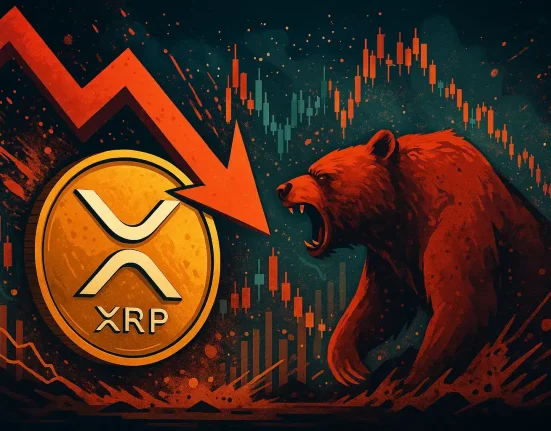Legalization of cryptocurrency in Pakistan has evolved into a complex legal and financial dilemma.
The Government of Pakistan established Pakistan Crypto Council (PCC) in February 2025 under chairmanship of the Federal Finance Minister, Senator Muhammad Aurangzeb.
Appointment of Bilal Saqib as CEO of the PCC and subsequently as Special Assistant to the Prime Minister on blockchain and cryptocurrency has marked a symbolic elevation of digital assets in the national discourse.
The PPC’s announcement to allocate 2,000 megawatts of energy to crypto mining and formation of the Pakistan Digital Assets Authority are bold steps, but the licencing frameworks are yet to be developed. Although the reported appointment of World Liberty Financial as a key advisory firm has added international optics, domestic procedural clarity is still not available.
Despite the passage of four months since the PPC’s inception no ‘white papers’, consultation drafts, or public engagement forums to solicit expert feedback or industry alignment are in the offing. Absence of such foundational discourse tends to create regulatory ambiguity and a vacuum of informed public policy.
The industry is operating in an atmosphere of speculation where neither the legal model nor its operational dynamics are known and this opacity frustrates stakeholders, impedes innovation, and delays essential compliance-building measures.
Announcement by Bilal Saqib’at the Bitcoin 2025 Conference in Las Vegas declaring Pakistan’s intention to establish a government-led Bitcoin Strategic Reserve was a dramatic disclosure and sudden escalation.
Reference to the United States as an inspirational model also added geopolitical colour, but the declaration raised significant alarm.
The notion of building strategic reserves in a highly volatile asset like Bitcoin without defined risk controls, legal backing, or multilateral support, especially under an active programme of the International Monetary Fund (IMF) creates a scenario fraught with institutional, constitutional, and international tensions.
The IMF does not recognize cryptocurrency as reserve assets or legal tender, complicating any alignment with sovereign commitments.
The existing legal framework, including the Constitution of Pakistan, the State Bank of Pakistan Act, 1956 and the Pakistan Currency Act, 1950, prohibits any parallel currency system or strategic reserves outside officially sanctioned instruments.
Concerns intensify when factoring in risks such as foreign exchange reserve mismanagement, cyber security threats, lack of transparency, limited liquidity utilization, reputational exposure, and fragile policy credibility.
The subsequent clarification by the CEO of PCC during a televised interview has further complicated the matter. His assertion that Pakistan would build its Bitcoin reserves using seized crypto assets rather than public funds revealed a glaring misunderstanding of international asset forfeiture law. In jurisdictions such as the United States, ownership of seized crypto remains with the accused until judicial forfeiture is finalized.
The legal transfer process mandates court orders, after which assets are either returned to victims, retained by agencies, or liquidated into fiat and deposited into the treasury. The US government does not hold seized cryptocurrencies in reserve but auctions them post-forfeiture.
The exposure of CEO of PCC, lacking comprehension and accurately communicating these mechanisms, reflects poorly on regulatory preparedness of the country. It has also eroded already fragile credibility of Pakistan on the global stage.
Despite its economic fragility, Pakistan remains among the top ten crypto-friendly nations. The projected number of cryptocurrency users in Pakistan is expected to reach 28.9 million by 2026, with projected revenues of $2.4 billion in 2025. Legalization of crypto in such a volatile economic environment poses existential risks to monetary sovereignty and financial sector stability.
The unregulated adoption of crypto could erode confidence in the rupee, weaken the ability of State Bank of Pakistan (SBP) to manage inflation, and incentivize capital flight. The risk of financial disintermediation grows as users shift to decentralized financial systems, bypassing the regulated banking infrastructure.
The situation poses a dual risk of systemic instability and heightened scrutiny from global regulatory bodies, particularly Financial Action Task Force (FATF) and the IMF. A more appropriate strategy under these conditions is to recognize crypto strictly as a digital asset class, not as legal tender.
The asset treatment model preserves SBP’s independence while allowing innovation under strict regulatory conditions.
The formation of a regulated ecosystem of licensed Virtual Asset Service Providers must be the cornerstone of Pakistan’s digital asset strategy.
Exchanges, wallets, and custodians should operate within a tightly regulated framework governed by Security & Exchange Commission of Pakistan (SECP) and SBP with mandatory know-your-client (KYC), anti-money laundering (AML) protocols, transaction reporting, and audit mechanisms.
The development of a regulatory sandbox environment would enable controlled experimentation under the supervision of regulatory bodies. This approach will support technical learning, policy formulation, and risk detection without national exposure. The cross-border use of crypto must be initially restricted to prevent capital outflows and preserve foreign exchange stability.
The government must distance itself from any notion of sovereign crypto reserves and instead focus on integrating blockchain into public services, such as tokenized bonds, digital land registries, welfare programmes, and logistics tracking.
The need for dedicated digital asset legislation is critical at this point of time. The legal framework should classify various token types, outline custodial responsibilities, define consumer protection mechanisms, and ensure compliance with global financial regulations.
Regulatory capacity must be developed in tandem. Training programmes must be established for regulators, law enforcement, forensic auditors, and judicial officials to develop the institutional fluency required for effective oversight.
The international investment narrative around Pakistan’s digital future must be repositioned.
Pakistan should host a ‘Crypto Summit’ in Islamabad, followed by regional events in Lahore and Karachi. These summits should not pose as PR campaigns but as policy-shaping forums, connecting global blockchain firms with Pakistani fintechs, banks, academic institutions, and startups. These platforms must also educate and guide the next generation of developers, regulators, and entrepreneurs.
The goal must be the formation of a trust-based public-private ecosystem capable of managing, scaling, and governing digital asset innovation securely and sustainably.
The broader institutional ecosystem must be evaluated for performance and reform. The PCC, despite bold announcements, lacks transparency. It has also failed to launch consultative processes, technical papers, or stakeholder engagements. Its work remains confined to speeches and symbolic declarations without measurable progress or inclusion.
The passive role of the Special Investment Facilitation Council (SIFC) must also be addressed. The SIFC must assume leadership in developing Pakistan’s crypto economy, beginning with the orchestration of global summits enabling the regulatory apparatus to scale in line with international best practices.
The strategic vision should prioritize safe integration, regulatory maturity, and private sector participation. The global digital economy presents Pakistan with a unique opportunity to redefine itself as a competitive, secure, and innovation-driven hub.
In Pakistan, the future of crypto is bright, anchored in its youthful demographic, entrepreneurial appetite, and capacity to leapfrog institutional bottlenecks through decentralized infrastructure. The right legal architecture, international cooperation, and governance transparency can turn this potential into a powerful national asset.
Copyright Business Recorder, 2025







